I didn't have my camera with me initially, but while they broke for lunch, I ran home to get it. I'm glad that I did. We saw some neat stuff. I'm really glad that I didn't have to show you boxes and pressure washing today... it may still happen one of these days, but not today.
We found an Oak tree that I hadn't seen before. Live Oak, Laurel Oak, and Water Oak are all very common in the park. This one is a type of Post Oak. Its leaves are much larger and lobed the way that most of the northern Oaks that I grew up with are shaped. The majority of the Oaks here in North Florida have slender leaves.

Throughout most of our walk through the woods, we were looking upwards. We were looking at the upper parts of the trees to distinguish them from each other and to find different species. The collection of trees found in an area can help to determine what type of natural community is found in each section of the park. It is important to know which communities are there to know how best to manage them or protect them. If there is a fire dependent community, then we need to be sure to introduce prescribed fire. If one type of plant is becoming too prevalent in a disturbed area, we may remove some to encourage the natural variation that should be there. The biologists used GPS to identify the different zones that we found and also made notes of which species were found in each area.
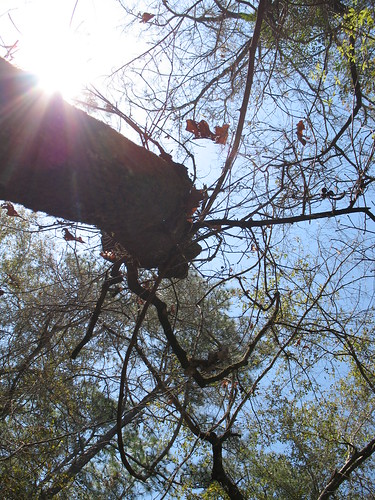
During our exploration, I couldn't help but get distracted by other interesting things. We saw a Question Mark butterfly, but I wasn't fast enough to "catch" it with my camera. We also found some beautiful Lichen and Fungi.
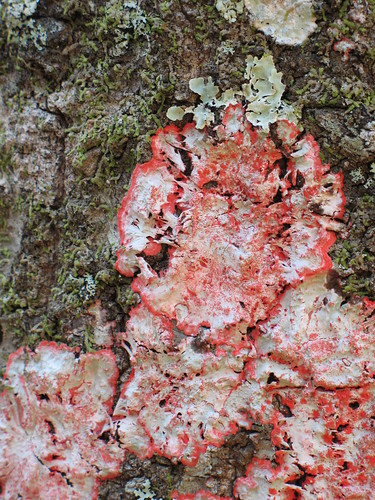
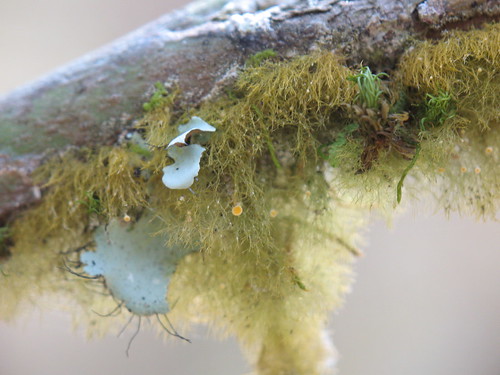
There where a few Red Maples throughout the woods that had beautiful crimson helicopters at the end of each branch. I didn't get close enough to any of the trees to get a good shot, but I found some of the helicopters in the water at the edge of a pond. I have great memories of enormous helicopters from an Oak tree near my grandmother's porch. I loved holding them up and dropping them and watching them spin to the ground. I don't know if these tiny Red Maple helicopters fly as well as the ones I remember. I will have to try them out. They are seed pods and the "flying" motion helps spread the seeds far and wide.
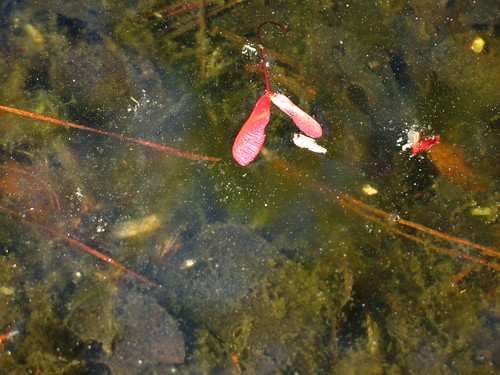
In some other wet areas in the woods, we found some big patches of Sphagnum Moss. It is a beautiful, lush green moss that you just can't resist touching. It grows in very wet areas and it feels like a saturated sponge, like you could squeeze water right out of it.
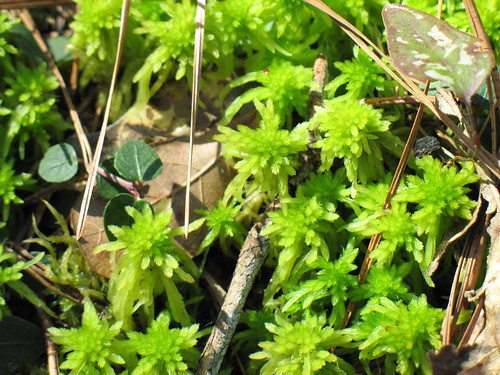
I found a really cool old stump. There wasn't much left of it, but it had an amazing pattern in the wood. I don't know what might have caused this wave. Maybe this is why the tree is no longer standing.
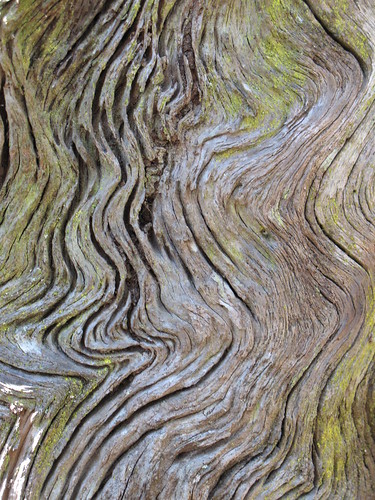
My favorite find of the day was a puffball. I have blogged about the Earthstar puffballs that I have found before. This was much more like the ones I remember finding with my mom when I was young. We all reverted to childhood as we crouched to poke the puffball and watch it perform.
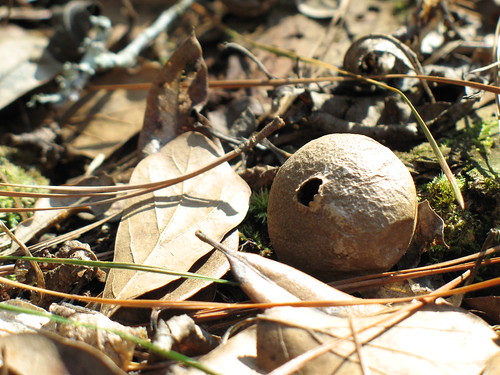
It was a fun day in the woods, definitely better than wiring and pressure washing. I did pick up the pressure washer though... it still has to happen.
3 comments:
Puffballs on "Amy's island"! I remember your being fascinated with lichen long ago. The pink is beautiful.
My dad called puffballs 'Devil's Snuffbox.'
I haven't heard Devil's Snuffbox before, that's great. I really enjoy hearing local names for plants and animals. My favorite was one I heard a few years ago. Someone told me that they knew Egrets as Pond Scoggins. I also hear Red Bird (Cardinal) and Black Snake (Black Racer) often.
Post a Comment